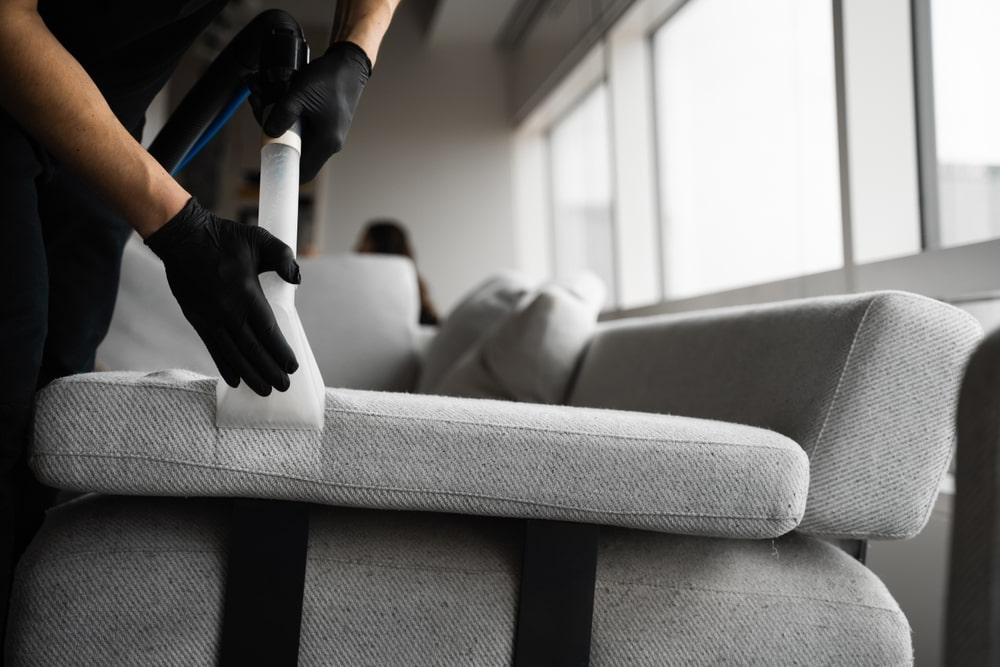Table of Contents
When the subject of air pollution is brought up, an image of black fumes coming out of factories gets created in our minds.
However, what many of us fail to realize is that indoor air can also be polluted and just as harmful as polluted outdoor air.
Although outdoor air pollution is greatly harmful to our health, indoor air quality poses a much bigger concern, as it often has a higher concentration of pollutants in a more confined space.
Whether the poor indoor air quality is due to pollutants coming from the outside or from unpleasant odors created inside the space, the dismal air circulation causes the dangerous fumes to stay in the environment.
Types of Indoor Air Pollutants
According to the EPA, indoor air pollution levels can be up to 5 times more dangerous than outdoor air.
But what causes a home to have poor air quality?
The most common indoor air pollutants fall under four categories: VOCs, biological pollutants, combustible byproducts, and legacy pollutants. Some of these pollutants are asbestos, lead, radon, excess moisture and mold, pet odors, and carbon monoxide.

Asbestos: The Hidden Danger in Older Homes’ Air
Asbestos is a mineral fiber that naturally occurs in rocks and soil. Because of its strength and heat resistance, it was used in various building materials, ranging from insulation to roofing shingles.
Exposure to this material can increase one’s risk of developing lung disease, asbestosis, and mesothelioma.
Lead Particles: Unseen Airborne Risks in Your Living Space
Lead emissions find their way into the air mostly through lead processing and the burning of leaded fuel. These fumes can enter into homes through windows but are not sent back out because of poor ventilation and airflow.
Inhaling amounts of lead fumes can cause both physical and mental illnesses such as cardiovascular problems and significant behavioral changes.
Radon: The Invisible Health Hazard Lurking in Your Home’s Air
Radon is a naturally occurring radioactive gas that has no color, taste, or smell, so without the proper equipment, it will not be able to be detected.
 Particles of this gas can enter a home and stick to cracks in the walls, causing constant exposure to the people living in that home.
Particles of this gas can enter a home and stick to cracks in the walls, causing constant exposure to the people living in that home.
Biological Pollutants: Microscopic Threats in Indoor Air
Biological pollutants are produced by living things and include bacteria, viruses, dust mites, and pollen. These pollutants are mainly found in areas near excessive moisture, which can come from humidifiers and unvented bathrooms.
The uncontrolled amounts of moisture also serve as breeding grounds for mold, mildew, and other harmful bacteria.
Pet Dander and Hair: Common but Overlooked Air Contaminants
et dander and hair, often overlooked as air contaminants, can significantly impact indoor air quality, particularly for individuals with allergies or asthma. Shedding dead skin flakes, saliva, hair, and feces, pets contribute to airborne particles that can trigger allergic reactions and respiratory symptoms. Even microscopic pet hair particles can circulate in the air, exacerbating sensitivities to pet allergens. For those with asthma, exposure to these allergens can lead to inflammation of the airways and potentially severe asthma attacks. Regular pet grooming, cleaning, and the use of air purifiers with HEPA filters can help mitigate the impact of pet dander and hair on indoor air quality, fostering a healthier environment for both pets and their owners.

Carbon Monoxide: The Colorless, Odorless Threat in Indoor Air
Carbon monoxide is an odorless gas that is produced from the burning of fossil fuels. The main source for carbon monoxide indoors is kerosene lamps and gas heaters.
This gas is hard to detect but being exposed to huge amounts of it can cause serious illness and even death.
Many homeowners don’t realize that their quality of life is being hindered because of poor air quality and don’t notice the unpleasant odors because they’ve spent a lot of time in their homes.
Only guests and professional air quality testers are able to detect poor air quality and the amounts of air pollution indoors.
Certified Air Quality Testing Service in Ottawa
If you have poor indoor air quality, then you’re putting yourself and your family at risk of getting a series of negative health problems.
Testing for superior indoor air quality is an often overlooked aspect of keeping your home safe and clean. It can be hard to detect the different pollutants that plague your home without the proper equipment, which is where we come in.
At Enviropure, we have the proper equipment that will allow us to carefully investigate your home for any dangerous air pollutants and come up with an effective and permanent solution.
Get in touch with us today to learn more about our home air quality testing services and get your free, no-obligation quote.






